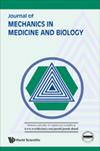Effects of intervention using biofeedback equipment and a neck correction exercise program on balance control ability, proprioception and craniovertebral angle in young adults: a pilot study
IF 0.6
4区 医学
Q4 BIOPHYSICS
引用次数: 0
Abstract
The objective of this research was to evaluate the effects of biofeedback equipment with a tilt sensor and a neck correction exercise program on balance control ability, proprioception, and craniovertebral angle (CVA) in young adults. Ten students (M/F, 7/3) aged 20–30 years attending Sunmoon University in Asan-si, South Korea, participated in this study. All subjects participated in three sessions. These sessions consisted of a biofeedback session with a tilt sensor, followed by an exercise session, and a combined session involving biofeedback equipment with a tilt sensor and exercise. Each session takes 30[Formula: see text]min. The sessions were conducted with a one-day interval between each one. Before the start of the experiment, physical characteristics were measured, and proprioception, balance control ability, and CVA were evaluated. The exercise program significantly improved the stability index (SI) in the eyes-closed state. The biofeedback program resulted in improvement in left rotation, and the CVA was significantly improved after all exercise sessions. In conclusion, a neck correction exercise program that actively moves muscles may have a potential positive impact on balance control ability. Biofeedback equipment might aid in enhancing proprioception by preventing forward head posture (FHP).生物反馈设备和颈部矫正运动对年轻人平衡控制能力、本体感觉和颅椎角的影响:一项初步研究
本研究的目的是评估带有倾斜传感器的生物反馈设备和颈部矫正运动方案对年轻人平衡控制能力、本体感觉和颅椎角(CVA)的影响。10名年龄在20-30岁的韩国峨山市顺文大学学生(M/F, 7/3)参与了本研究。所有受试者都参加了三次会议。这些课程包括一个带有倾斜传感器的生物反馈课程,随后是一个锻炼课程,以及一个包含带有倾斜传感器的生物反馈设备和锻炼的组合课程。每个回合需要30分钟。每次会议之间间隔一天。实验开始前,测量大鼠的身体特征,评估本体感觉、平衡控制能力和CVA。运动方案显著提高了闭眼状态下的稳定性指数(SI)。生物反馈程序改善了左旋,CVA在所有运动后都得到了显著改善。总之,积极运动肌肉的颈部矫正运动项目可能对平衡控制能力有潜在的积极影响。生物反馈设备可能有助于通过防止头部前倾(FHP)来增强本体感觉。
本文章由计算机程序翻译,如有差异,请以英文原文为准。
求助全文
约1分钟内获得全文
求助全文
来源期刊

Journal of Mechanics in Medicine and Biology
工程技术-工程:生物医学
CiteScore
1.20
自引率
12.50%
发文量
144
审稿时长
2.3 months
期刊介绍:
This journal has as its objective the publication and dissemination of original research (even for "revolutionary concepts that contrast with existing theories" & "hypothesis") in all fields of engineering-mechanics that includes mechanisms, processes, bio-sensors and bio-devices in medicine, biology and healthcare. The journal publishes original papers in English which contribute to an understanding of biomedical engineering and science at a nano- to macro-scale or an improvement of the methods and techniques of medical, biological and clinical treatment by the application of advanced high technology.
Journal''s Research Scopes/Topics Covered (but not limited to):
Artificial Organs, Biomechanics of Organs.
Biofluid Mechanics, Biorheology, Blood Flow Measurement Techniques, Microcirculation, Hemodynamics.
Bioheat Transfer and Mass Transport, Nano Heat Transfer.
Biomaterials.
Biomechanics & Modeling of Cell and Molecular.
Biomedical Instrumentation and BioSensors that implicate ''human mechanics'' in details.
Biomedical Signal Processing Techniques that implicate ''human mechanics'' in details.
Bio-Microelectromechanical Systems, Microfluidics.
Bio-Nanotechnology and Clinical Application.
Bird and Insect Aerodynamics.
Cardiovascular/Cardiac mechanics.
Cardiovascular Systems Physiology/Engineering.
Cellular and Tissue Mechanics/Engineering.
Computational Biomechanics/Physiological Modelling, Systems Physiology.
Clinical Biomechanics.
Hearing Mechanics.
Human Movement and Animal Locomotion.
Implant Design and Mechanics.
Mathematical modeling.
Mechanobiology of Diseases.
Mechanics of Medical Robotics.
Muscle/Neuromuscular/Musculoskeletal Mechanics and Engineering.
Neural- & Neuro-Behavioral Engineering.
Orthopedic Biomechanics.
Reproductive and Urogynecological Mechanics.
Respiratory System Engineering...
 求助内容:
求助内容: 应助结果提醒方式:
应助结果提醒方式:


